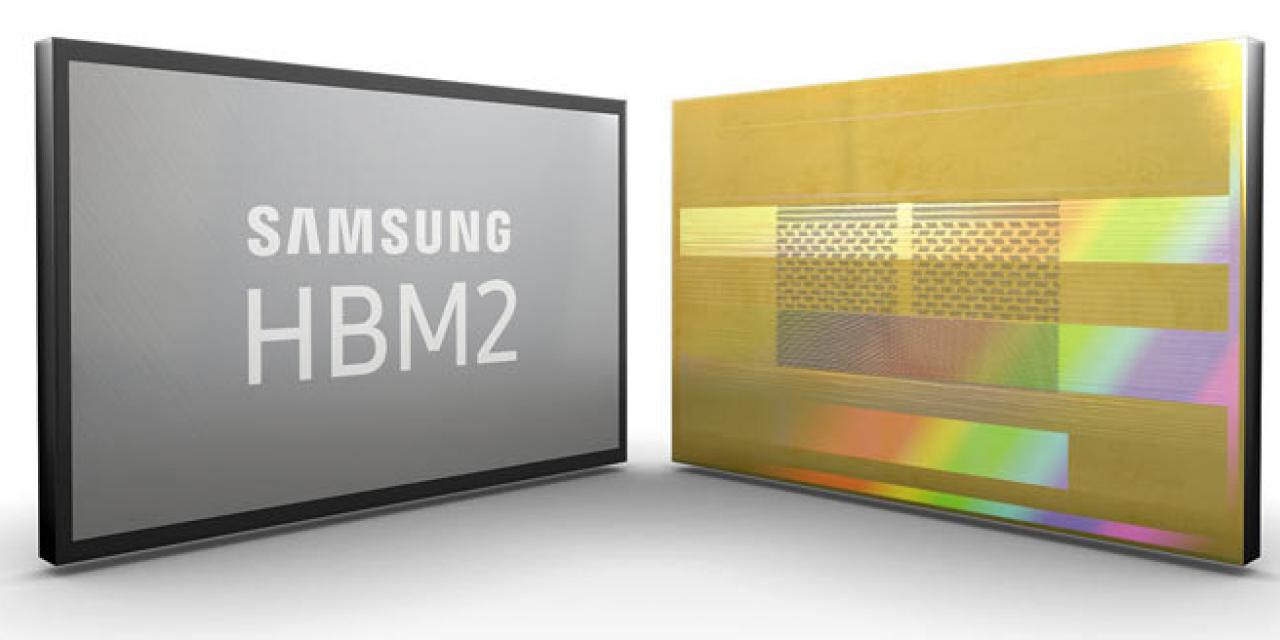
Amidst questions about whether upcoming graphics card generations from both AMD and Nvidia would utilize GDDR5X, GDDR6 or high-bandwidth-memory, Samsung has made it clear that the latter option will certainly be possible at least. In an announcement, it made it clear that production of its own second-generation high-bandwidth-memory, HBM2 Aquabolt, was now well underway.
HBM was first utilized by AMD on its Fury line of graphics cards in 2015, where it proved very capable in terms of bandwidth, but a little limiting in terms of the actual size of the chips. With just 4GB on the top of the line Fury X card, some games quickly maxed it out and its overall performance suffered, despite being an impressive overall graphics card at the time and the most powerful AMD would release until its Vega line this year.
Since then though, due to supply and cost issues we haven't seen much in the way of HBM used in any high-end graphics cards. It would take until Nvidia's first Volta release, the Titan V, to bring it back and then it came with HBM2, a second generation that was even faster, though much more capacious. Samsung's Aquabolt iteration would be likely to only increase that, as its modules come in 8GB chips, more than enough to equip future cards with oodles of high-speed memory.
To give you some context of how fast the new standard is, a single 8GB module has a bandwidth of 307 gigabytes per second or around 10 times that of a comparable 8GB GDDR5 module, as Hexus explains. If a graphics card were to use four of these chips, it would have more than 1.2 terabytes per second of bandwidth.
This is a 50 percent improvement on Samsung's first generation HBM, operating at 1.2v.
